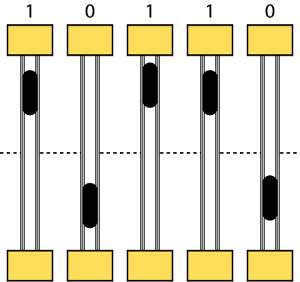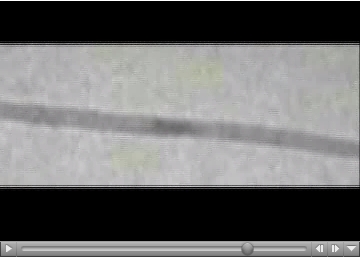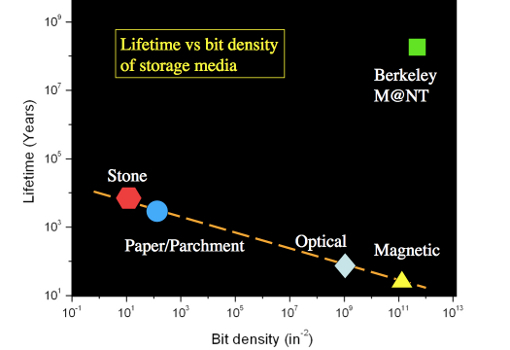Nanotube archival memory |
| Digital storage devices have become ubiquitous in our lives; music, photographs, and even the written word have moved from their traditional analog formats to newer digital ones. However, this move to digital storage has raised concerns about the lifetime of storage media. While ancient analog archival media (e.g. stone and vellum) can preserve their data for thousands of years, digital storage technologies such as optical discs, magnetic discs, and magnetic tape are thought to last at most a century (and in many cases much less). Obviously stone and vellum are not well-suited to todays volume of data: the pits in a CD are spaced about a micron apart, carvings in stone have feature sizes closer to a centimeter. New archival technologies will have to combine the best features of both, storing data at a high density with long lifetimes. |
|
|
|
We have developed a new mechanism for digital memory storage with the potential to store data with both long lifetime and high density. Our memory device consists of a crystalline iron nanoparticle enclosed in a multiwalled carbon nanotube. The nanotube can be reversibly moved through the nanotube by applying a low voltage, "writing" the device to a binary state represented by the position of the nanoparticle. The state of the device can then be subsequently read by a simple resistance measurement. |
|
|
|
A video of our nanotube memory device as the iron is moved back and forth. |
|
|
|
A plot showing typical data storage lifetimes vs bit density for a variety of media. |
|
See also: Featured in: |



